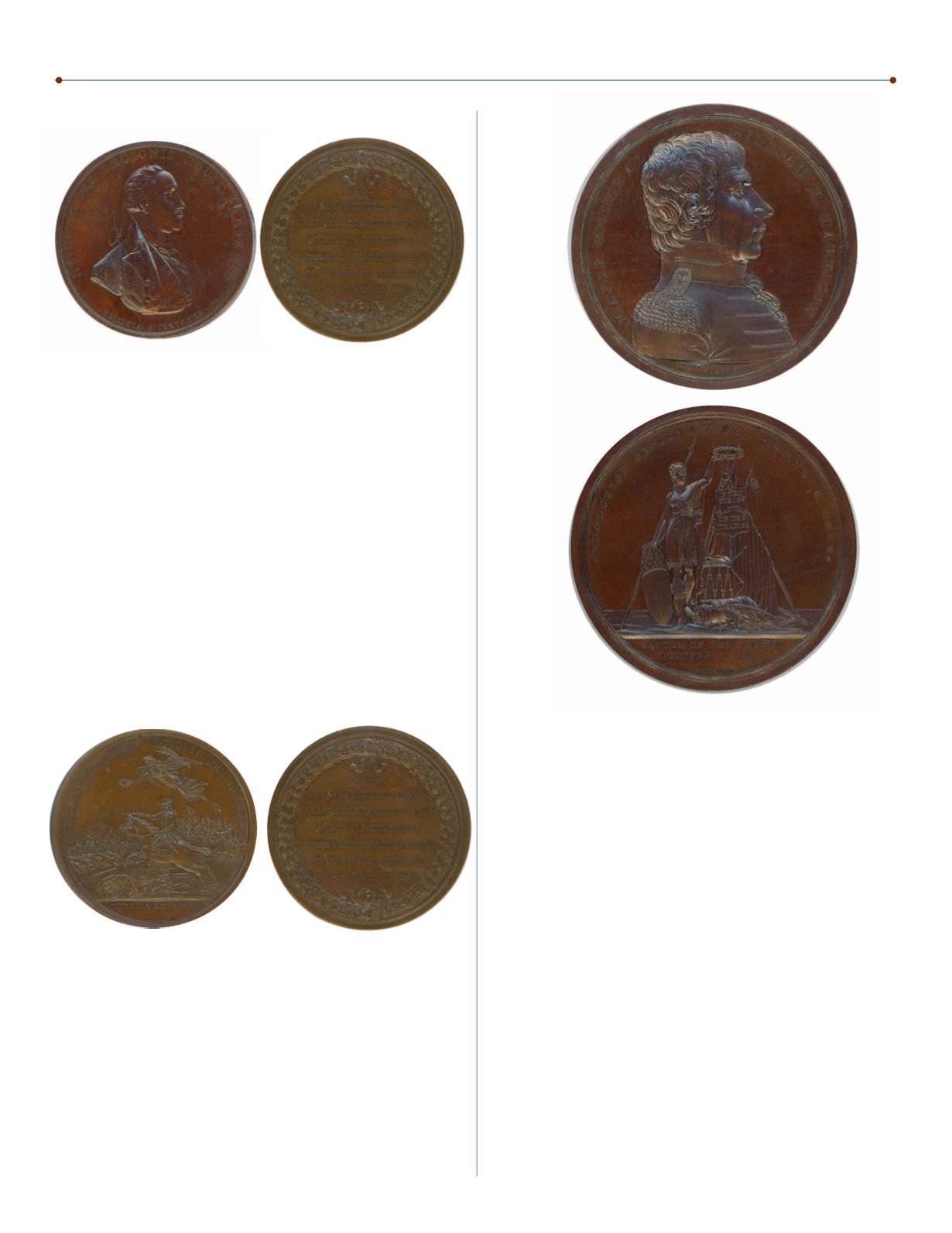

73
H
U.S. Mint Medals
MILITARY MEDALS
327.
MAJOR HENRY LEE.
MI-5; Betts 575. 45.3mm. Thick
(4.3mm) planchet. Copper, bronzed. Joseph Wright, Sc. Choice
Uncirculated. The obverse bears the bust of Lee to the right a
Latin legend translated as, “To Henry Lee, commander of a
cavalry squadron, from the American Congress”. The reverse
inscription in ten lines commemorates Lee’s victory over the
British at Paulus Hook in New Jersey, the last British outpost in
the states.
This specimen has been struck from a cracked and rusted
obverse die, with die breaks behind the figure of Major Lee
and a broad rim break visible above the R in PRAEFECTO.
This is the original obverse die used ca. 1793 which cracked
in hardening. No example of a struck medal is known using
the original reverse die. The reverse die used here was made
in 1874 by William Barber. According to Adams and Bentley,
“it can most readily be identified by four triangular chips that
box the D in DIE. They cite an estimate that 35 of these were
made including a few in silver. We sold an AU specimen in
our 2012 Auction Eighty Two for $3795.00 and Heritage sold an
NGC graded MS-63 for $4700.00 in 2014.
328.
LIEUTENANT COLONEL WILLIAM WASHINGTON
– BATTLE OF COWPENS.
MI-8; Betts 594. 46.5mm. 52.1
grams. Plain edge. Benjamin Duvivier, Sc. (Paris Mint) Nice
Uncirculated. Struck from the original obverse and reverse dies.
Adams/Bentley Die State 3. Obverse with Washington on a horse
leading his troops against the British cavalry. A winged Victory
flied above the battle scene. The reverse bears a wreath around a
Latin inscription which translates as, “The American Congress
to William Washington, commander of a cavalry regiment.”
($1500-2000)
329.
MAJOR GENERAL WILLIAM HENRY HARRISON.
MI-
14; Neuzil 16.. 65mm. Copper, bronzed. Moritz Furst, Sc. Thin
(4.8mm) Planchet. Uncirculated with an attractive mahogany
Lot 327
Lot 328
finish. There are several very tiny rim nicks that do
not distract. Otherwise, a choice example, superior to
most. The obverse bears General Harrison’s quarter length bust
to the right, similar to that appearing on the Gaines medal
offered above. The reverse bears a trophy of British arms being
crowned by an allegorical figure of America. In the exergue, is
the event commemorated, the Battle of the Thames, October
5, 1813. A most attractive piece struck from the original dies,
one of 127 such pieces, with a small bar lying across the bottom
of the letter T in the designer’s name on the obverse. Our
last offering of an example from original dies was in our 2012
Auction Eighty Two where an Unc. specimen brought $1667.50
330.
BRIGADIER GENERAL JAMES MILLER
. MI-17; Neuzil
19. 65mm. Copper, bronzed. Moritz Furst, Sc. Uncirculated with
an attractive and reflective red mahogany There are two dark
corrosion spots as obverse center, as shown. Obverse with the
bust of General Miller to the right. I’LL TRY, below the bust. The
reverse depicts a scene of the Battle of Lundy’s Lane (Niagara).
During the Battle of Niagara, the efforts of the Americans to
break the British center were being nullified by a battery of
artillery. When General Scott ask General Miller if he could take
this battery he replied “I’ll try” and led his men to the attack with
such energy and courage that the British were thrown back in
confusion and the guns captured.
Lot 329
















